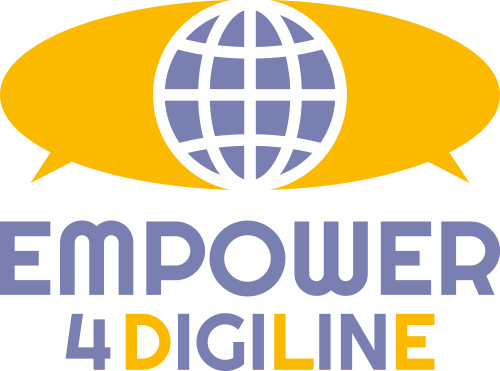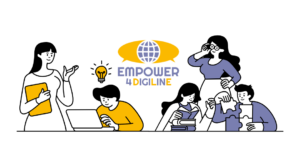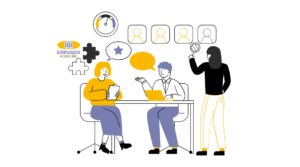Shifting language teaching to an online environment has many advantages. A key benefit is the ability to overcome physical and geographical barriers, which is an important step towards accessibility. E-learning offers learners around the world flexible and innovative access to education. But even in the digital world, we face the challenge of ensuring that educational opportunities are accessible to all, regardless of individual abilities and needs.
Why accessibility matters in online language learning
Accessibility means that all learners have equal access to the content and features of a course. This is particularly important in language learning, where different media and forms of interaction are often used. A well-designed accessible course not only improves the learning experience, but also contributes to a clearer and more user-friendly course structure that benefits everyone.
Understand learners’ needs: A good starting point is to ask participants in advance about their specific needs. This can be done confidentially and will allow you to design the course to be as accessible as possible for everyone. It is important that learners feel that their needs are taken into account without feeling stigmatised.
Learning materials and preparation: Ensure that all learning materials such as videos, texts and presentations are available online. This allows learners to learn at their own pace and access the material when they need it. This is particularly useful in language training, where repetition and practice are important parts of the learning process.
Provide participants with the necessary materials before the videoconference. This gives everyone the opportunity to prepare and, if necessary, review the content with the help of software. It is also helpful to start videoconferences with a short lead time to allow participants to adjust their technical settings, e.g. change the font size or make other individual adjustments.
Communication and interaction: Provide different methods of interaction and participation to meet the different needs of learners. In the language classroom, these may be written, oral or visual tasks. This flexibility allows learners to choose the method that suits them best and helps them to engage fully in the learning process.
Simple navigation and clear language: An intuitive and easy-to-understand navigation system is the backbone of any online course. All menus, buttons and links should be clearly labelled and easy to find. A well-structured course manual will help all learners navigate through the content efficiently and effectively.
Avoid complex sentences and jargon. Clear, simple language ensures that all learners can understand the content. This is particularly important in language learning, where clear communication of concepts is essential to facilitate the learning process and minimise misunderstandings.
Media and accessibility: Use alternative text and detailed descriptions for images, diagrams and videos. These not only help visually impaired learners, but also provide additional resources for all participants. Subtitles and transcripts for videos and audio recordings are essential. They not only help the hearing impaired, but also non-native speakers and those learning in noisy environments.
Continuous improvement: Accessibility in e-learning is not a static goal, but an ongoing process. It requires regular review and adjustment to ensure that the course meets the needs of all learners. Use the tools and software available to regularly check your courses for accessibility and to identify and remove potential barriers.
By designing language courses that are both online and accessible, we create an inclusive learning environment where all participants can succeed, regardless of their individual circumstances. This not only promotes equal opportunities, but also improves the overall quality and effectiveness of learning. In an increasingly connected world, we should strive to leave no one behind and ensure that everyone has access to quality education.
Quellen
Graf-Mandl, M. (2022). Barrierefreiheit in der digitalen Lehre. TELucation. TU Graz. Retrieved 12.08.2024, from https://telucation.tugraz.at/10-barrierefreiheit-digitale-lehre/
Humboldt-Universität zu Berlin. (2022). Wie kann ich Online-Lehrveranstaltungen barrierefrei gestalten? Digitales Lehren und Lernen. Retrieved 12.08.2024, from https://www.digitale-lehre.hu-berlin.de/de/faq/fragen-zur-barrierefreiheit/wie-koennen-online-lehrveranstaltungen-inklusiv-gestaltet-werden
Lanquill. (2023). Accessible Language Learning: Bridging the Gap for Diverse Learners with Language Lab Software. LinkedIn. Retrieved 12.08.2024, from https://www.linkedin.com/pulse/accessible-language-learning-bridging-gap-diverse-learners-pgroc
TU Darmstadt. (2024). Synchrone (Online) Lehrveranstaltungen barrierefrei gestalten. Barrierefreiheit in der digitalen Lehre. Retrieved 12.08.2024, from https://www.e-learning.tu-darmstadt.de/elearning/digitale_barrierefreiheit/artikel_details_54720.de.jsp
Witt, S. (2022). Live online und barrierefrei – schwierig, aber nicht unmöglich. erwachsenenbildung.at. Retrieved 12.08.2024, from https://erwachsenenbildung.at/digiprof/neuigkeiten/17156-live-online-veranstaltungen-barrierefrei-durchfuehren.php







